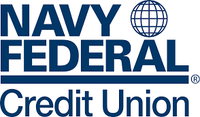What is a share-secured loan, and how does it work?

The Bankrate promise
At Bankrate we strive to help you make smarter financial decisions. While we adhere to strict , this post may contain references to products from our partners. Here's an explanation for .
Key takeaways
- Share-secured loans offer a way to build credit without steep borrowing costs.
- The funds in your account are used as collateral, making these loans easy to access even if you have little or no credit.
- Funds are frozen until you pay the loan in full, though some financial institutions release some funds as you pay down the balance.
- Timely loan payments can boost your credit score since payment activity is reported to the credit bureaus, but paying late can have the opposite effect.
A share-secured loan is a personal loan that uses the balance in your savings account as collateral. This type of loan generally has lower interest rates than other personal loans because it is secured.
Share-secured loans are a good option for those with poor or no credit scores. These loans can be a great way to build your credit score because they are easier to qualify for than other loans and they typically have low interest rates.
What are share-secured loans?
Also referred to as a “passbook loan” or “certified pledge loan, a share-secured loan uses the assets in a share account, otherwise known as a savings account, to back up the loan.
When you take out a share-secured loan, the equivalent assets within your savings account are frozen and become available again once you pay off the loan. The maximum you’re allowed to borrow varies from bank to bank — some lenders may allow you to borrow the full amount in your savings account or a percentage. The money is repaid in monthly installments that are generally spread over two to 15 years.
Because they offer insignificant risk to lenders, share-secured loans typically come with low fixed interest rates. As an example, as of March 2024 Industrial Federal Credit Union charges a minimum 3 percent APR (annual percentage rate) for a share-secured loan.
How do share-secured loans work?
A share-secured loan is secured by your savings account, share certificate account or money market account. When you’re approved for a share-secured loan, your lender will place a hold on the savings amount you’re borrowing against.
You can repay the loan through monthly automatic withdrawals, direct deposit or monthly check. If you fail to repay the loan, the savings your lender is holding as collateral will typically be used to cover the loan.
Although your savings are used to back up the loan, you should avoid making late payments or defaulting. This may cost you penalties or late fees and can hurt your credit history, as share-secured loans are often reported to the credit bureaus.
If building credit is your goal when seeking a share-secured loan, consider taking out a small amount that is easier to pay off quickly.
Where to get a share-secured loan
Both banks and credit unions offer share-secured loans. When researching options, evaluate the reputation of the lender and the tools or resources it offers borrowers, along with the eligibility criteria, interest rates and fees. Here are three credit unions and one bank that offer share-secured loans.

Affinity Plus Federal Credit Union
-
Affinity Plus Federal Credit Union lets you use the money in your savings account to get a savings secured loan. Borrowers can earn rewards that can be redeemed in the future in exchange for cash back, events, travel, charitable donations, merchandise or a more competitive rate. You’ll also have access to other membership perks, like a car-buying service, an extensive network of realtors, discounted tax preparation software and insurance discounts.
You can join today if you meet the membership guidelines or by making a one-time donation of $25 to the Affinity Plus Foundation.

Industrial Federal Credit Union
-
Industrial Federal Credit Union (IFCU) offers a share-secured loan that caters to individuals looking to build credit from scratch or improve their credit rating. A credit check isn’t required if you’re a credit union member and have enough money in your savings account to cover the loan.
You can apply for a shared-secured loan after becoming a member, which can be done by meeting the employer or eligibility requirements or by making a $5 donation to one of several charities. You’ll also need to make a $5 deposit to a savings account and pay a one-time $5 membership fee.

Navy Federal Credit Union
-
The Savings Secured Loan from Navy Federal Credit Union, the world’s largest credit union, comes with an extended loan term. Even better, the funds are released and made available for use as you pay down the balance. The APR is equal to the share rate plus 2 percent for loans of up to 60 months and increases to the share rate plus 3 percent for loans with 61- to 180-month terms.
Membership is available to military members, their families and household members, as well as those who work for or are retired from the department of defense. You can join Navy Federal online or by visiting a branch.

Regions Bank
-
Regions Bank features a deposit-secured installment loan that is available to Regions Savings and Money Market account holders. Loan amounts range from $250 to 100 percent of the available account balance. The APR varies from 4 to 6 percent based on the amount you borrow. There are also fees associated with this loan, including a late fee of 5 percent of the unpaid balance or $100, whichever is less.
To learn more about a savings-secured loan or open an account, use the online tool to request an appointment with a Regions banker.
Pros and cons of share-secured loans
As with every type of borrowing, there are pros and cons to share-secured loans. Here are some of the benefits and drawbacks to keep in mind if you’re considering a share-secured loan.
Pros
- Build or repair your credit: These loans can help you establish a track-record of making on-time payments. Just be sure payments are reported to credit bureaus.
- Continue to earn interest and dividends: Many lenders promise that the funds in the savings or money market account that you’re borrowing against continues to earn interest or dividends.
- Easy to obtain: Because you’re borrowing against your own funds, there is typically no credit check required.
- Inexpensive: The interest rates associated with share-secured loans are typically quite low, making them an inexpensive way to borrow.
Cons
- Frozen savings account funds: The loan amount is typically frozen in your account and released incrementally as you make payments or at the end of the loan term.
- Loss of collateral: If you are unable to repay the loan for some reason, you may lose the money in the savings or money market account that was used as collateral.
- Credit score impact: If you fail to repay the loan, it may trigger a derogatory mark on your credit profile.
Who share-secured loans are best for
Share-secured loans may be a good idea if you fit one of the following situations.
People who need to establish credit
If the loan is reported to the credit bureaus, making monthly payments on time can help build your credit profile. Otherwise, ask your lender to report loan payments to the credit reporting agencies and verify that it did so by checking your credit report. You can check your credit report for free weekly from each of the major credit reporting bureaus — TransUnion, Equifax and Experian — at AnnualCreditReport.com.
People with poor credit history
For consumers with bad credit this type of loan can be easier to qualify for than a traditional personal loan. This is because the money in your account acts as collateral that the bank can take to recoup its losses if you default on the loan.
People looking for a flexible, low-cost way to access cash
Unlike specific kinds of loans — like auto loans tied to cars — you can use share-secured loans for a variety of purposes. The general rule of thumb is that you should only use them to pay for necessities that you can’t afford upfront.
People who want more borrowing options
While share-secured loans may cost you some money in interest payments now, a higher credit score should allow you to save money through lower interest rates on loans in the future. If you have a large amount of revolving debt, qualifying for a low rate on a debt consolidation loan could save you hundreds or even thousands of dollars.
Who should avoid shared-secured loans
Share-secured loans aren’t a perfect solution for everyone. You may want to look into other loan options if you fall into one of the following groups of people.
People who will struggle to pay back the loan
You have to pay a share-secured loan back in installments over several months or years. If you can’t pay it back, the bank will take the money you have in savings and you will also owe interest and fees. Not sure if you will be able to pay back the loan? Don’t risk it — consider a different credit-building product instead.
People who can qualify for other credit-builder options
A share-secured loan is a good way to start building credit if you have limited options, but it is not the quickest or best way to boost your credit score. If you can qualify for other types of loans or a credit card, these may be better ways to improve your credit quicker.
People who don’t need to improve or build credit
With a share-secured loan, you are essentially paying interest on the money you already have. If you don’t need to build your credit, you may be better off simply using the money you have in savings instead of taking out a loan.
How to qualify for a share-secured loan
Because you’re essentially borrowing from yourself, qualifying for a share-secured loan is a straightforward process. The most important factor is the amount of savings you have in your account. Many lenders offer instant approval for this type of loan, so you may have loan funds available the same day you apply.
Step 1: Research lenders
See which lenders offer share-secured loans. Depending on your collateral type, you may want to seek out different lenders. Certain banks may only offer this type of loan secured by savings, but others could allow you to use a certificate of deposit (CD) as collateral.
Step 2: Consider all the factors
Different lenders may have different terms and conditions. Some may offer you a lower interest rate, longer terms or a higher loan amount. Many lenders allow you to borrow up to 100 percent of your savings or CD balance, while others allow you to borrow a percentage of what you have deposited.
The repayment timeline for a share-secured loan also varies by lender and amount borrowed, but it is generally from two to 15 years. Decide what you need and research who will give you the best terms.
Step 3: Apply in person or online
Many lenders have an option to apply for a loan online. Some lenders may require you to make an appointment and apply in person or over the phone. When you decide on a lender, fill out the application with the personal information required.
Step 4: Find out if you are approved
You may get approved instantly or you may have to wait to hear back. Once you are approved and the funds are deposited, you can start using the money you’ve borrowed.
Share-secured loan alternatives
If you’re looking to meet short-term financial goals or improve your credit score, there are other options available aside from share-secured loans.
Secured credit card
Like a share-secured loan, a secured credit card is attached to a deposit account. The credit limit is the same amount deposited into the account. The money is removed from the account if you don’t make the agreed payments.
Credit-builder loan
A credit-builder loan also works like a share-secured loan, but you pay off the loan before you can access the money. The lender you choose will deposit the funds into a savings account. When the loan is paid off, you’ll have access to the money, minus any fees. This makes the credit-builder loan better suited for long-term needs.
Secured personal loan
Another option is a secured personal loan. A secured personal loan is backed by an asset you already own, such as a car, boat or RV. If you default on the personal loan, the lender can seize your property to recoup its losses.
Next steps
A share-secured loan can be a good option to consider if you’re looking to establish or rebuild credit. Although there is a cost to taking out this kind of loan, it may make sense if your goal is to eventually obtain other kinds of credit that are more difficult to qualify for, such as a mortgage.
Be sure to understand all the terms and conditions and check with your lender to confirm that the loan will be reported to credit bureaus. It’s also best to shop around and compare at least three options to ensure you find the best fit for your financial situation.
Related Articles


How do secured loans work? Types & what to know about default



